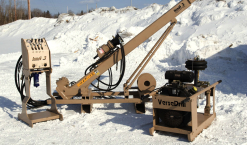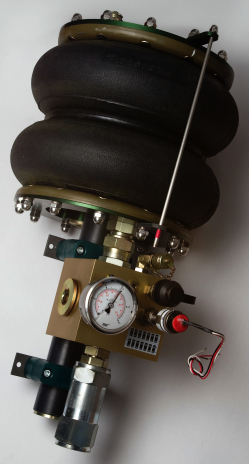
Expanding Possibilities
By André Voshart
Fluid Power hydraulicsVariable volume reservoir solves weighty hydraulic problem

Fluid power has been around for hundreds of years—and even dates back to ancient Greek and Chinese societies—so it’s not often machine builders see something out of the ordinary. But, with its patented variable volume reservoir (VVR), Bois-des-Filion, Que.-based Sobacor Inc. may have an alternative to the static volume reservoirs traditionally found on hydraulic systems. According to the company, its VVR weighs less, takes up less space and requires less oil to operate due to the unit’s rubbery, balloon-like bellows.
“A reservoir should be designed to expand and contract according to system demand,” says Carl Seguin, creator of the VVR and special projects design engineer for Sobacor, a company that specializes in designing custom hydraulic manifolds and molds for the aerospace and defence industries. “The whole classic reservoir concept is an old school concept still used today for the wrong reasons, in my opinion.”

He argues that, in certain cases, some rules of thumb developed over the last 30 years no longer apply to modern hydraulics. For instance, it’s accepted practice that reservoirs be sized to allow oil to stay in the reservoir for 2.5 to three minutes to reduce in-tank turbulence. Less turbulence allows solid contaminants to settle at the bottom and allows any returning air bubbles to surface.
But, Seguin says, today’s filters remove the particles large and heavy enough to settle at the bottom of a reservoir in three minutes, and the micron-sized particles left would take days, not minutes, to settle given fluid viscosity. And since the VVR is airtight, destructive bubbles never enter the system, as long as it’s thoroughly bleed of air before initial start-up.
Still, he stresses the VVR isn’t a cure-all. For example, it’s best suited to hydraulic motor and rotary actuator circuits, where the only variable volume required, after filling the lines and the components volume, comes from thermal expansion and contraction of the fluid. Another best-use scenario is in systems with differential cylinder actuation, where the variation arises from both the thermal expansion and the rod volume.
